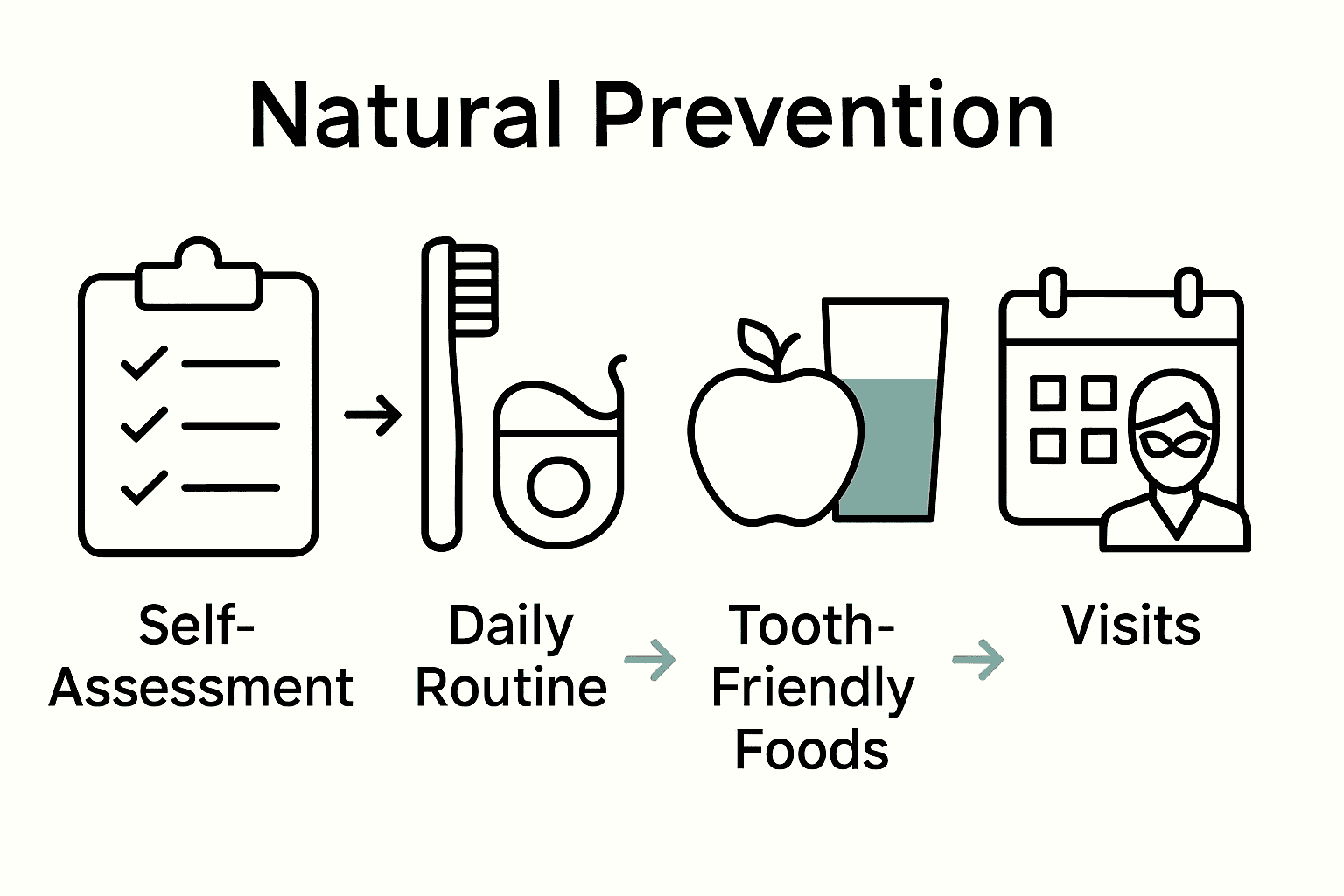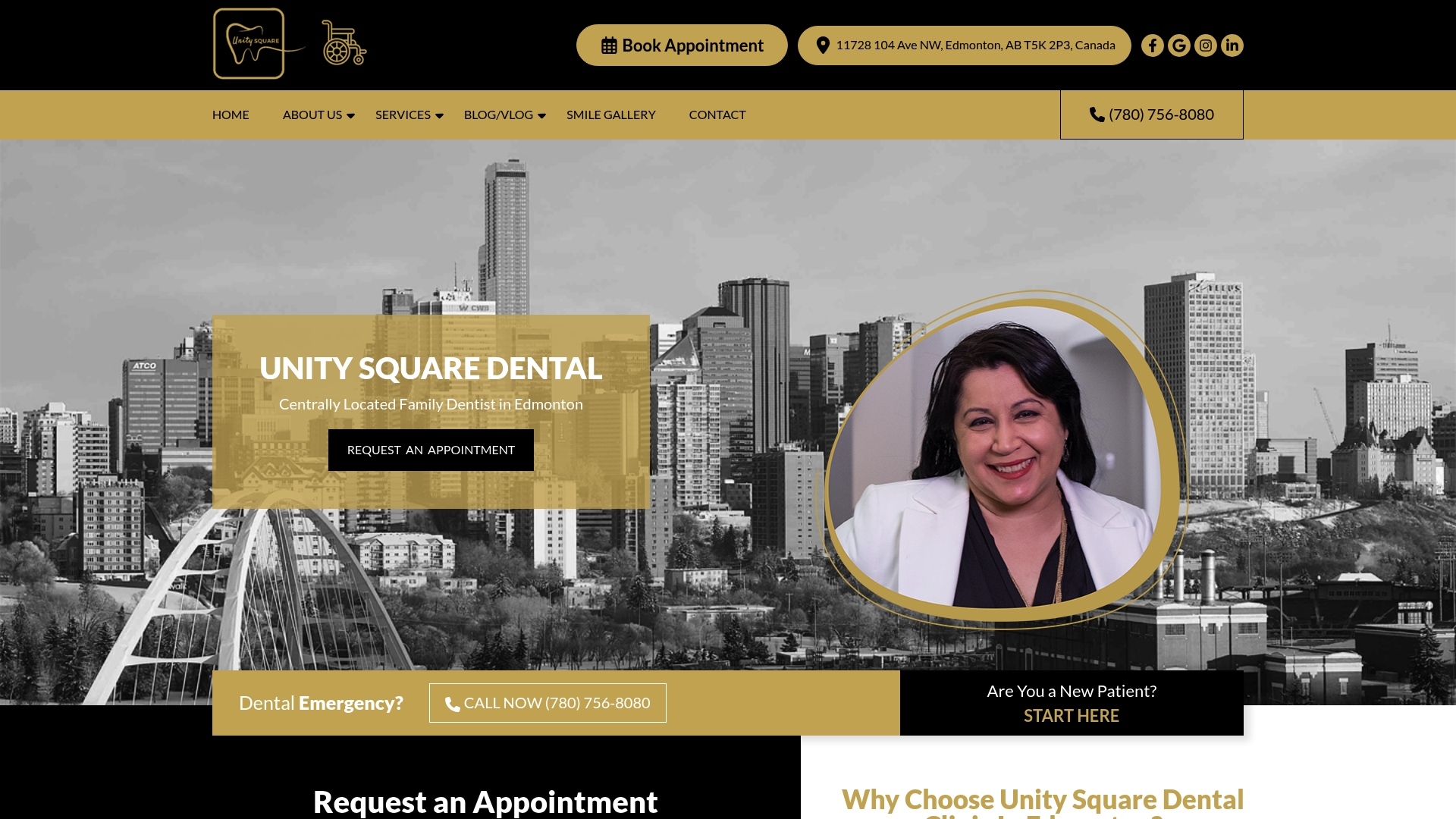
Over half of adults miss critical steps in their daily dental care, with only 11.8 percent flossing regularly. Good intentions alone are not enough to protect your teeth from cavities or gum disease. If you want a healthy smile that lasts, it starts by understanding where your habits help or harm your oral health. This guide gives you a clear, fact-based path to stronger teeth and fewer dental worries.
Table of Contents
- Step 1: Assess Current Oral Hygiene Habits
- Step 2: Establish Consistent Daily Cleaning Routine
- Step 3: Select Tooth-Friendly Foods And Drinks
- Step 4: Schedule Regular Professional Dental Visits
- Step 5: Monitor Progress And Adjust Habits
Quick Summary
| Key Point | Explanation |
|---|---|
| 1. Assess Your Current Oral Hygiene | Honestly evaluate your brushing and flossing habits to identify strengths and weaknesses in your oral care routine. |
| 2. Establish a Daily Cleaning Routine | Create a structured daily dental hygiene routine that takes 10-15 minutes to enhance tooth protection through consistency. |
| 3. Choose Tooth-Friendly Foods | Opt for foods like dairy, fruits, and vegetables while avoiding sugary and acidic snacks to support dental health. |
| 4. Schedule Regular Dental Visits | Book biannual dental check-ups to catch potential issues early and ensure comprehensive oral health assessments. |
| 5. Monitor Your Progress | Keep track of your oral hygiene habits and adjust routines based on your reflections to maintain motivation and improve care. |
 |
|
Step 1: Assess Current Oral Hygiene Habits
Before diving into preventing tooth decay, you need an honest assessment of your current oral health practices. Think of this step as creating a personal dental roadmap that reveals your strengths and areas for improvement.
According to research examining oral hygiene habits PubMed, many adults have inconsistent dental care routines. In fact, a study found that while 62% of participants brushed their teeth at least twice daily, only 11.8% used dental floss consistently. To conduct your personal assessment, grab a notebook and answer these key questions:
- How many times per day do you brush your teeth?
- Do you floss daily or only occasionally?
- What type of toothbrush and toothpaste do you currently use?
- When was your last dental checkup?
- Do you have any specific oral health concerns?
Don’t just breeze through these questions. Take time to reflect honestly. Your goal is to create a baseline understanding of your current oral hygiene practices. This self-evaluation will help you identify specific areas where you can make meaningful improvements and reduce your risk of tooth decay.
A helpful tip: Consider tracking your oral hygiene routine for one week. Note your actual brushing and flossing habits to get a realistic picture of your current practices. This simple step can provide powerful insights into your dental health.

Step 2: Establish Consistent Daily Cleaning Routine
Creating a consistent daily oral hygiene routine is your roadmap to preventing tooth decay and maintaining excellent dental health. This step transforms sporadic brushing into a powerful preventive strategy that protects your teeth every single day.
According to experts on establishing routines Homes and Gardens, the key is breaking down tasks into manageable chunks. For your dental routine, this means creating a simple yet comprehensive approach that takes just 10-15 minutes daily.
Here is a structured daily dental cleaning routine to follow:
- Morning: Brush teeth for two minutes using fluoride toothpaste
- Use a soft bristled toothbrush at a 45-degree angle to your gums
- Gently brush all tooth surfaces including outer, inner, and chewing surfaces
- Floss between teeth to remove hidden plaque
- Rinse with an antiseptic mouthwash
For lasting success, place your toothbrush and floss in a visible location as a visual reminder. Consistency is more important than perfection.
Some days might be challenging, but returning to your routine quickly is what matters most.
If you struggle to maintain the routine, consider setting a phone alarm or linking your dental care to another established daily habit like showering or making coffee. How Often to Brush Teeth Naturally can provide additional strategies for making oral hygiene a natural part of your day.
Step 3: Select Tooth-Friendly Foods and Drinks
Choosing the right foods and drinks is a powerful strategy in preventing tooth decay and maintaining optimal oral health. Your diet plays a crucial role in protecting your teeth from harmful bacteria and supporting overall dental wellness.
When selecting tooth-friendly options, focus on foods that naturally support dental health. 10 Teeth Friendly Snacks for Healthy Smiles recommends incorporating these key categories:
- Calcium-rich foods like cheese, yogurt, and milk
- Crunchy fruits and vegetables such as apples, carrots, and celery
- Lean proteins including chicken, fish, and eggs
- Nuts and seeds that provide essential minerals
- Water and unsweetened beverages
Avoid foods and drinks that can harm your teeth:
- Sugary sodas and energy drinks
- Sticky candies and processed snacks
- Acidic citrus fruits and juices
- Excessive coffee and tea with added sugar
- Alcohol that can dry out your mouth
A helpful strategy is to think of your mouth as a delicate ecosystem. Just as you would nurture a garden, you want to choose nutrients that support healthy growth and protect against harmful invaders. Rinse your mouth with water after eating sugary or acidic foods to minimize potential damage.
Remember that balance is key. You do not need to completely eliminate treats but should consume them mindfully and maintain excellent oral hygiene afterward.
Step 4: Schedule Regular Professional Dental Visits
Scheduling regular professional dental visits is a critical strategy in preventing tooth decay and maintaining long-term oral health. These proactive check-ups are your first line of defense against potential dental problems before they escalate into more serious conditions.
According to the World Health Organization, biannual dental visits are recommended to maintain optimal oral health and detect potential issues early. The National Institute of Dental and Craniofacial Research emphasizes that professional dental examinations allow for thorough cleaning and comprehensive assessment of your oral health status.
Here are key steps to effectively schedule and prepare for your dental visits:
- Call your dental office and schedule appointments twice per year
- Select appointment times that fit consistently into your regular routine
- Choose morning or early afternoon slots when you are typically more alert
- Book follow-up appointments before leaving the dental office
- Request a reminder call or text message to help you remember
Prepare for each dental visit by gathering relevant information about your oral health history. Write down any concerns or changes you have noticed in your mouth. Bring a list of current medications and be ready to discuss your diet and oral hygiene routine.
Regular Dental Checkups: Complete Guide for Families can provide additional insights into maximizing the benefits of your dental visits. Remember that consistency is key preventing potential dental issues and maintaining a healthy smile.
Step 5: Monitor Progress and Adjust Habits
Monitoring your oral health progress is a critical step in maintaining long-term dental wellness and preventing tooth decay. This phase transforms your dental care from a passive routine into an active, personalized strategy that evolves with your specific needs.
Research from the National Center for Biotechnology Information highlights the significant impact of self-monitoring on improving oral hygiene behaviors. The Cochrane Review further confirms that personalized feedback and regular tracking can dramatically enhance your oral health outcomes.
Here are practical strategies to effectively monitor and adjust your dental habits:
- Keep a weekly oral hygiene journal tracking brushing frequency
- Note any changes in tooth sensitivity or gum health
- Take monthly photos of your teeth to track visual progress
- Compare your current habits against your original baseline assessment
- Celebrate small improvements to maintain motivation
Consider using a digital app or simple spreadsheet to log your oral care activities. This systematic approach transforms monitoring from a chore into an engaging personal health project. Pay attention to patterns you notice and be willing to adapt your routine based on what works best for you.
Remember that progress is not linear. Some weeks will be better than others, and that is completely normal. The key is consistent effort and a willingness to learn and adjust.
Take Control of Your Oral Health with Expert Support
Preventing tooth decay naturally requires more than just knowledge it demands consistent care, personalized guidance, and professional insight. Many struggle to maintain daily habits like flossing regularly or choosing tooth-friendly foods. This can lead to frustration and worries about painful dental problems or costly treatments down the road. If you want to build on the steps outlined in the guide and gain confidence in your smile you need a trusted partner who understands your unique needs.

At Unity Square Dental, we combine advanced dental technology with compassionate, family-oriented care tailored to you. Whether you want help establishing a reliable oral hygiene routine, need expert advice on diet and decay prevention, or require thorough checkups and cleanings, our Edmonton clinic is here for you. Schedule your next appointment today at Unity Square Dental and take the first step toward a healthier, brighter smile. Discover more about our general dentistry services, learn how our team supports your dental wellness journey, and enjoy the convenience of flexible scheduling by visiting us now.
Frequently Asked Questions
How can I assess my current oral hygiene habits to prevent tooth decay naturally?
To assess your oral hygiene habits, take time to reflect on questions about your brushing and flossing frequency, the type of products you use, and your recent dental checkups. Write down your answers to identify strengths and areas for improvement in your dental care routine.
What steps can I follow to create a consistent daily cleaning routine for my teeth?
Establish a daily cleaning routine by brushing for two minutes twice a day, using fluoride toothpaste, and flossing daily. Aim to set aside 10-15 minutes each day, and place your toothbrush and floss in a visible location to remind you to stick to this routine.
Which foods and drinks should I choose to support tooth health and prevent decay?
Choose tooth-friendly foods such as calcium-rich dairy products, crunchy fruits, and vegetables, along with lean proteins and nuts. Incorporate these options into your meals while limiting sugary snacks and acidic beverages to protect your teeth from decay.
How often should I schedule professional dental visits for effective tooth decay prevention?
Schedule professional dental visits every six months to ensure thorough cleaning and early detection of dental issues. Align your appointments with regular routines to make them easier to remember and stick to.
What methods can I use to monitor my progress in preventing tooth decay?
Use a weekly oral hygiene journal to track your brushing and flossing habits and note any changes in your dental health. Consider taking monthly photos of your teeth to visually track progress and keep yourself motivated to maintain healthy habits.
How can I make adjustments to my oral care routine based on my monitoring?
Review your oral hygiene journal weekly to identify patterns and areas needing improvement. Adjust your routine as necessary, such as increasing brushing frequency if you notice any signs of decay, to ensure your habits evolve to better support your dental health.
Recommended
- Causes of Tooth Decay: Complete Guide for Families – Unity Square Dental
- 10 Teeth Friendly Snacks for Healthy Smiles – Unity Square Dental
- Understanding the Connection Between Diet and Dental Health – Unity Square Dental
- 7 Essential Steps for a Family Dental Hygiene Checklist – Unity Square Dental
- Come mantenere i denti bianchi: guida pratica completa – dentalnetcare.it

